APKWS II guided missiles in Ukraine
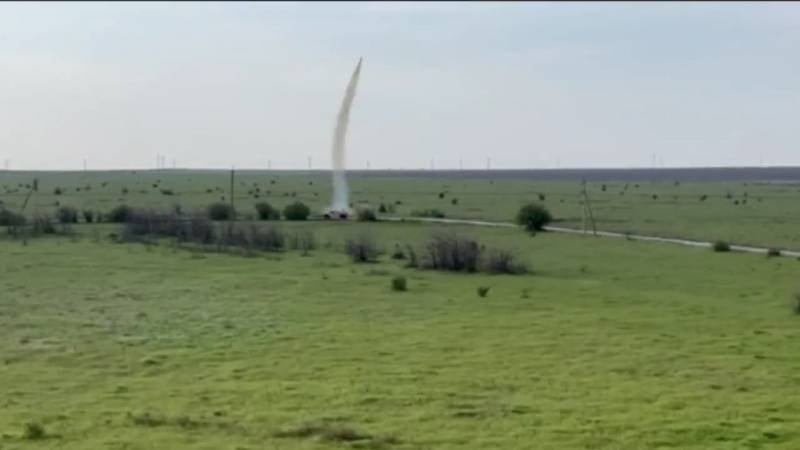
The use of the APKWS II missile by Ukrainian formations. Photo Telegram / BMPD
Over the past year, the United States has repeatedly transferred guided missile weapons to the Kyiv regime. Thus, it was reported about the delivery of several batches of APKWS II guided missiles, made on the basis of unguided aviation Hydra 70. Such products are intended for use as part of missile systems as ground-to-ground and ground-to-air munitions.
Plans and supplies
On April 1, 2022, the US Department of Defense announced the next, the third package of military-technical assistance for Ukraine since the start of the Russian Special Operation. It provided for the supply of various weapons, equipment, etc. for an amount of approx. $300 million. In particular, they announced the transfer of guided missiles with semi-active laser guidance. The type and number of such products were not named. However, the above description suggested that we are talking about APKWS II (Advanced Precision Kill Weapon System) missiles.
In early May, such assumptions were confirmed, but their sources could be questionable. First, the American media, and then Ukrainian propaganda, reported that the Pentagon plans to send APKWS II missiles.
On August 24, 2022, the United States again announced another assistance package, this time with a total value of almost $ 3 billion. This package included VAMPIRE (Vehicle-Agnostic Modular Palletized ISR Rocket Equipment) anti-aircraft missile systems from L3Harris, as well as an unnamed number of guided missiles with a laser seeker - obviously again APKWS. L3Harris soon clarified that it would take approx. 9 months.
The next batch of guided missiles for such systems was announced in February 2023, on the anniversary of the start of the Russian Special Operation. As before, the type of products and supply volumes were not disclosed, although plausible assumptions could be made.
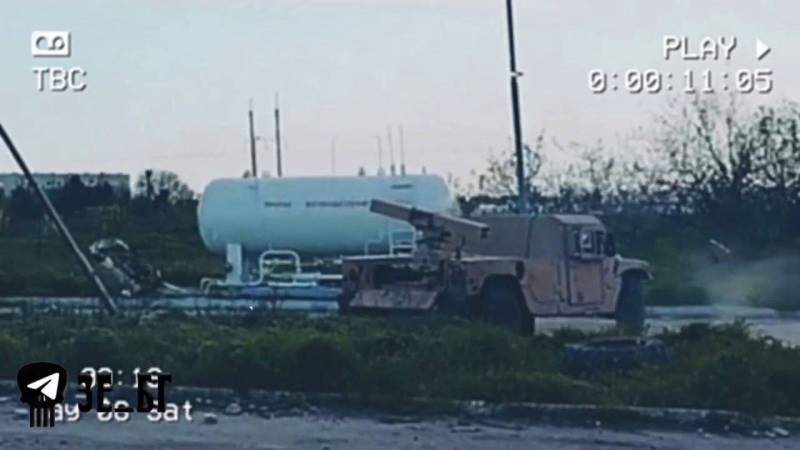
Launcher based on HMMWV. Photo Telegram / BMPD
Already in early April, the American leadership approved new arms supplies to Ukraine. The next package included 10 VAMPIRE anti-aircraft systems. Judging by the timing and other factors, we are talking about a real delivery of equipment, announced last summer. It seems that L3Harris, commissioned by the Pentagon, has finally manufactured air defense systems for Ukrainian formations, and now they should be shipped to the recipient.
Thus, over the past year, the United States has promised several times to transfer APKWS II missiles and compatible land-based missile systems to Ukraine. However, until recently, as it turned out, it was only about promises and plans. Real deliveries began only a few weeks ago. For what reason the Pentagon and the White House announced the transfer of weapons long before their actual shipment is unknown.
Application Details
Missile systems capable of using APKWS products appeared at the disposal of the Kyiv regime no later than April. At the end of the month, the first known video showing the combat use of such equipment appeared on Ukrainian resources. It is reported that the equipment was received and used by the newly formed 37th Separate Marine Brigade.
The video shows the launch of missiles from a ground launcher. The footage is not of high quality, but it could be assumed that the missiles were placed on a platform like HMMWV. One ammunition hit a certain structure, and the second was sent to a tower of unknown purpose. The purpose and results of such strikes remained unknown.
A few days later, in early May, another similar video appeared. This time, a combat vehicle was in the frame, incl. in a firing position, and her ammunition. They also showed the missiles hitting different objects. The results of the shooting are again in question, but this video clearly shows which one weapon received Ukrainian formations.
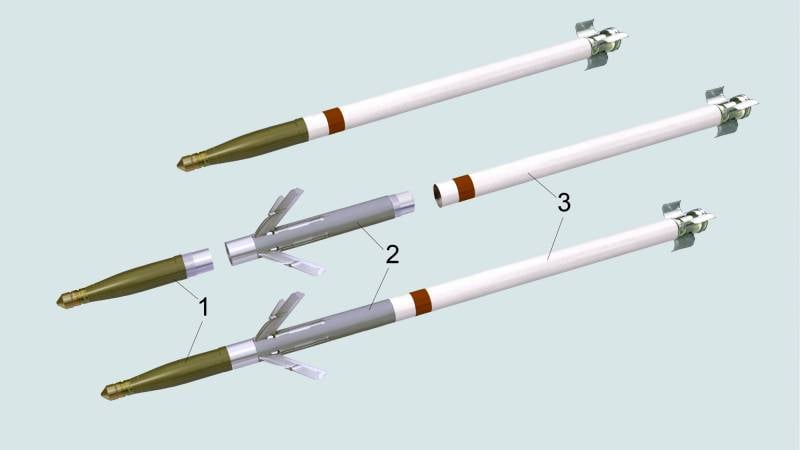
How to make an APKWS II rocket from a Hydra 70 product. Graphics Wikimedia Commons
It is obvious that the resulting missile systems will continue to be used. They will be used to attack ground targets, as well as as an air defense system designed to fight UAVs. How successful their work will be is unclear. At the same time, it can be expected that information about the destruction of such equipment will appear in the near future. The early appearance of such News some objective factors will help.
managed unmanaged
The development of the “promising precision weapon system” APKWS based on the Hydra 70 unguided aircraft missile started at the beginning of the 2005s. Several organizations participated in the competition, but the results of their work did not suit the customer represented by the ground forces. In XNUMX, the program was restarted under the name APKWS II, taking into account the accumulated experience and previous problems.
In 2006, BAE Systems was selected as the winner of the APKWS II competitive stage and received a contract for further work. Then there were new organizational and other difficulties, and in 2008 the program was transferred to the naval forces. Already under their leadership, the APKWS II rocket was brought into service and deployment in 2012. In the middle of the decade, the Air Force also received such weapons.
The main customer for serial APKWS II missiles is the Pentagon. Missiles are used on different air platforms of the Air Force and Navy. Also, the adoption of a ground carrier, such as VAMPIRE, is not excluded. The aviation version of the complex has already been sold to five countries, and new orders are expected. In addition, in order to help, APKWS II was provided to the Kyiv regime.
Additional block
The AGR-20 APKWS II missile is based on the 70mm Hydra 70 unguided rocket. The conversion is carried out in the simplest way. A control unit is placed between the standard warhead and the Hydra engine. After its installation, the length of the rocket increases from 1,06 m to 1,87 m while maintaining the diameter. The mass of the guided missile is 15 kg versus 11-12 kg for the base sample.
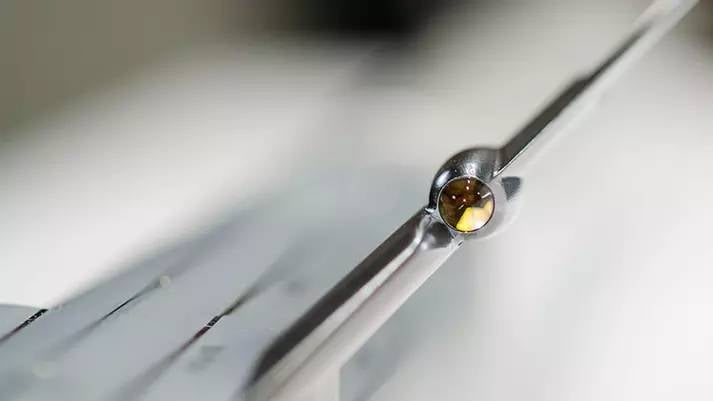
Rocket rudder with an optical element of the laser seeker. Photo BAE Systems
The WGU-59/B control unit is a standalone device with the necessary electronics and X-shaped rudders that fold out after the start. A semi-active laser seeker is used. The latter does not include a single optical device; instead, there are four smaller sensors on the handlebars. This arrangement allows the head to solve the problem of finding a target, but does not require it to be placed in the nose of the missile.
APKWS II retains the standard solid propellant engine from the Hydra 70, with which it can reach speeds of up to 900-1000 m / s. When launched from an aircraft at the optimum altitude, the flight range reaches 10-11 km. On ground platforms, the range is halved or more. However, the target acquisition range of the seeker is limited to 5-6 km.
The Hydra 70 product can carry various types of warheads, and such capabilities have been preserved in the APKWS II project. At various times in the United States, 70-mm warheads with high-explosive fragmentation, cumulative, incendiary, etc. were produced. charges.
AGR-20 missiles can be used with different launchers. Thus, compatibility with aircraft blocks for the Hydra on several launch rails has been preserved. For ground platforms, Arnold Defense has developed the LAND-LGR4 transport and launch container for four missiles. It also requires a laser target designator to guide missiles. The support for the TPK and the equipment for firing control can be mounted on different carriers, starting from the Humvee.
Objective limitations
A guided missile based on the Hydra 70 has several distinct advantages. The main thing is the simplicity and low cost of manufacture. AGR-20 APKWS II can be made from cash unguided missiles by installing a control unit. The manufacture of an engine and warhead specifically for such a product is not required. At the same time, compatibility with previous media is maintained.
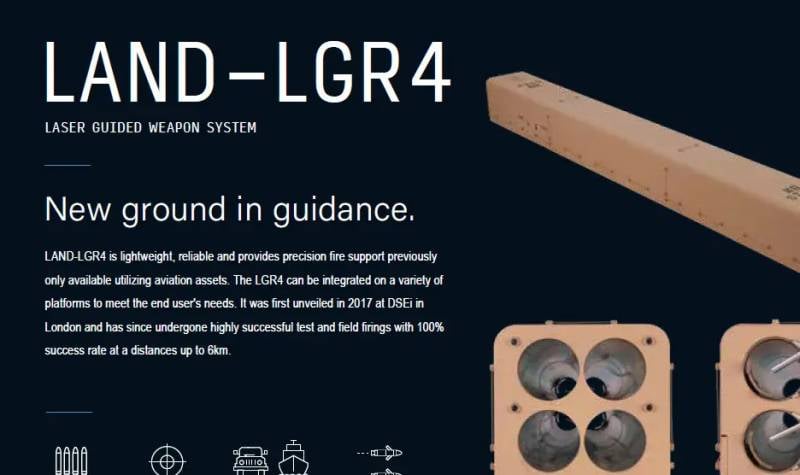
Transport and launch container LAND-GR4. Arnold Defense Photos
The semi-active laser seeker is notable for a certain simplicity, but provides confident targeting with minimal deviation. In addition, it allows you to attack both stationary and moving targets, on the ground or in the air. Thus, the VAMPIRE complex during tests has already shown the possibility of hitting air targets, incl. UAV.
However, there are fundamentally irreparable shortcomings. So, a small caliber limited the mass of the engine and, as a result, the flight range. When firing from a ground platform, this parameter does not exceed 5-6 km. The ground complex, when launched, unmasks itself and can be hit by enemy missile systems or artillery.
The problem may be the limited power of the warhead. In 70-mm hulls, it was possible to place charges weighing no more than 4-6 kg. The high-precision seeker to some extent compensates for the lack of power, but in some situations even this will not help.
Battle check
Thus, the United States is again sending to Ukraine curious weapons systems with a specific ratio of characteristics and ambiguous capabilities. In addition, a limited number of systems are being transferred, clearly not enough to solve all the problems at hand.
Apparently, Ukraine is again considered as a testing ground for testing modern weapons in a conflict with a developed enemy. This time, APKWS II missiles and related equipment will have to pass the battle test. And the possibility of successfully passing the test in the current situation is very doubtful.
Information